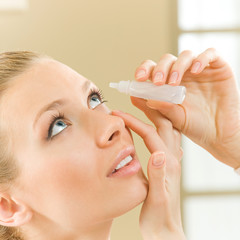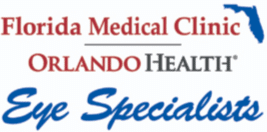Dry Eye Syndrome
Dry eye syndrome is a chronic and typically progressive condition that, depending on its cause and severity, may not be completely curable. Thankfully, in most cases dry eyes can be managed successfully resulting in noticeably greater eye comfort, fewer dry eye symptoms, and often sharper vision as well.
Dr. Arey completed advanced fellowship training in cornea and external disease at the University of Texas Southwestern Medical Center in Dallas, including the treatment of complex dry eye patients, and is pleased to bring that training to his patients at FMC Eye Specialists.
Symptoms and Causes
Symptoms may include:
- Gritty/ sandy/ watery eyes
- A burning sensation, worsened by environmental factors
- Vision that becomes blurred after periods of reading, watching TV, or using a computer
Causes may include:
- Aging
- Diseases including Sjogren’s Syndrome, rheumatoid arthritis, Parkinson’s and diabetes
- Hormonal changes, particularly after menopause
- Certain prescription medications
- Hot, dry, or windy conditions
- Reading, using a computer, or watching TV
Eye surgery, including cataract surgery and LASIK
Treatments

General measures
Dry eyes can be exacerbated by environmental factors such as air conditions and ceiling fans, dusty/ smoky conditions and even by our natural tendency to reduce our blink rate when concentrating on tasks. Purposefully blinking, especially during computer use, and resting tired eyes are basic steps that can be taken to minimize discomfort. Using a humidifier, especially in the winter, can also help by adding moisture to the dry indoor air.
Artificial tears
For mild to moderate cases, supplemental lubrication is the most important part of treatment. Application of artificial tears up to 4 to 6 times per day can provide temporary relief.
Lubricating ointments
Lubricating ointments such as Genteal® Gel and Refresh® PM are generally used at bedtime in patients with moderate to severe dry eye signs and symptoms. Application requires pulling down the lower eyelid and applying a small amount inside. Depending on the severity of the dry eye condition, it may even need to be applied in the daytime as well.
Omega 3s
Oral intake of omega-3 fatty acids either via dietary supplements or the consumption of dark fleshed fish is associated with better control of dry eye symptoms. Dr. Arey often recommends a unique formulation called Hydroeye® for his patients with dry eye syndrome.
Restasis®
Restasis® (topical cyclosporine A is a prescription medication that is FDA approved for the treatment of chronic dry eye syndrome. Restasis® helps to increase tear production by acting as an anti-inflammatory on the ocular surface. The effect of Restasis® on dry eyes does not occur immediately, but an overall relief in dry eye symptoms is most often achieved at 3 to 6 months after the start of treatment.
Xiidra®
Xiidra® is FDA-approved for treating the signs and symptoms of chronic dry eye syndrome. Xiidra® blocks the interaction of two key mediators in the inflammatory cascade that underlies much of chronic dry eye syndrome. Relief from symptoms may occur in as little as two to four weeks following the initiation of treatment with Xiidra®.
Cequa®
Cequa® is the newest FDA-approved treatment for chronic dry eye syndrome and utilizes a unique drug delivery formulation to increase the penetration of the active ingredient into the ocular tissues, enabling greater natural tear production.
Punctal plugs
In each eye, there are little openings that drain tears into the tear ducts called puncta. There are methods to partially or completely close the tear ducts. This blocks the flow of tears into the nose, and thus more tears are available to the eyes. Punctal plug insertion is painless and is most often used for patients who have not found dry eye relief with eye drops.
Serum tears
In patients with more advanced dry eye disease, serum tears can be prescribed to alleviate symptoms and improve ocular surface health. An alternative to artificial tears, serum tears are created from a patient’s own blood to better mimic natural tears. After having a blood draw, a medical laboratory sterilely processes the blood serum into eye drops and delivers the supply to the patient for use up to six times per day.
LipiFlow®
LipiFlow® is an FDA-approved medical device that applies localized heat and pressure to the eyelids of patients with Meibomian Gland Dysfunction (MGD), a key contributor to chronic dry eye syndrome. Of the over 100 million people worldwide that suffer from dry eye, the majority have evaporative dry eye, which stems from a deficiency in the oily lipid layer of the tear film. The lipid deficiency is due in part to blockages in the Meibomian glands located in the eyelids. The lipids serve to protect the water (aqueous) layer of tears so that the tears do not evaporate too quickly. While traditional dry eye treatments address symptoms, LipiFlow® treats the root cause of the condition by unblocking the glands and allowing them to resume their natural production of lipids. The results is a healthier, more stable tear film. LipiFlow® treatments can only be provided by a licensed physician, and Dr. Arey is pleased to be able to offer this exciting treatment to his patients with chronic dry eye syndrome.

please contact us at (813) 284.2323 today to schedule an appointment.
2 Locations
NORTH TAMPA
14014 North 46th Street, Suite A, Tampa, FL 33613
LAND O’ LAKES
2100 Via Bella Blvd, Suite 105
Search
Programming, Design and Hosting by PracticeDock, ©
